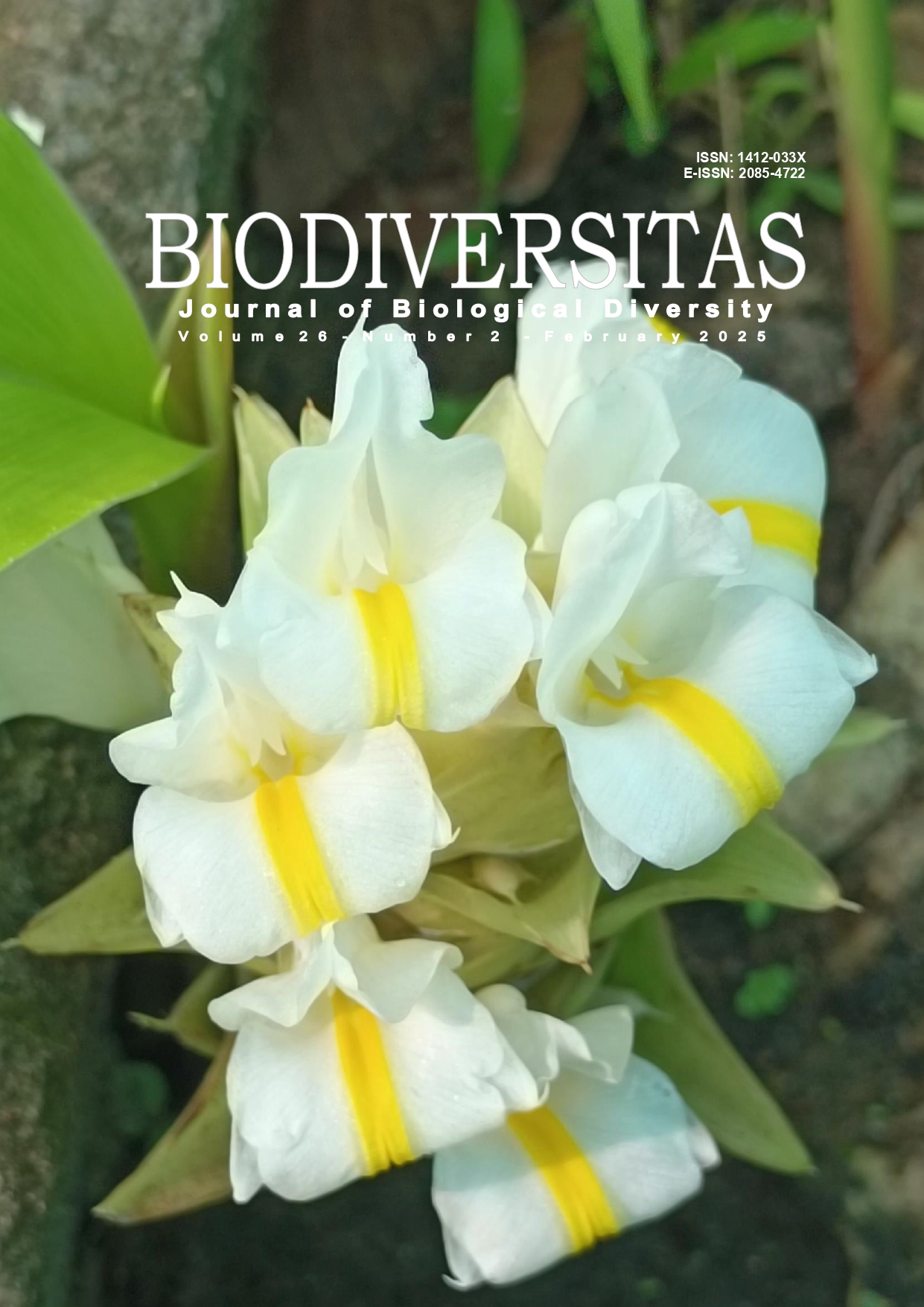Comparison of soil microbial composition and fertility in rhizosphere of healthy and Fusarium wilt-affected sweet potato plants
##plugins.themes.bootstrap3.article.main##
Abstract
Abstract. Nafi’ah HH, Fajarfika R, Fatimah R, Maulana H, Yoel A. 2025. Comparison of soil microbial composition and fertility in rhizosphere of healthy and Fusarium wilt-affected sweet potato plants. Biodiversitas 26: 941-950. Fusarium wilt is a significant disease impacting sweet potato plants, primarily affecting the stem and inhibiting optimal growth. The severity of the disease is hypothesized to be influenced by soil microbial composition and fertility. Therefore, this research aimed to compare the microbial composition and soil fertility parameters in the rhizosphere of healthy sweet potato plants and those infected with Fusarium wilt. The hypothesis posited that these two plant groups had significant differences in microbial composition and soil fertility. The method used was a Cross-Sectional Survey, a robust approach that involved data collection obtained through observation and soil sampling. Soil samples were obtained from Kuningan and Garut Regencies. Microbial diversity and abundance were analyzed using targeted quantification techniques, including the Total Plate Count method on selective media. Parameters of soil fertility, such as pH, organic matter content, and nutrient concentrations, were also evaluated. The results showed significant distinctions in microbial composition, with diseased plants exhibiting a higher microbial population dominated by beneficial microbes, such as Phosphate-Solubilizing Bacteria (PSB) and nitrogen-fixing bacteria. A negative correlation was observed between Fusarium fungi and PSB. Additionally, differences in soil fertility characteristics were evident between the two locations. This research provided a better understanding of the microbial population in sweet potato plants and a foundation for developing more effective strategies to manage Fusarium wilt.

